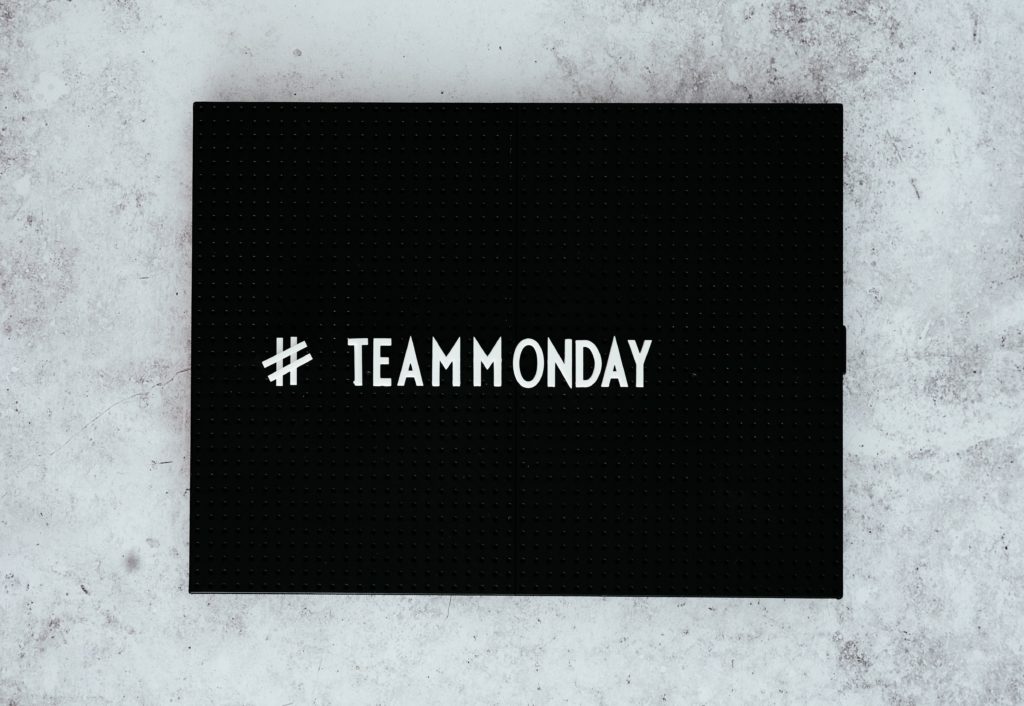Whether it’s circumstantial or by choice, more employees are working from home than ever before. While telecommuting has been proven to enhance productivity and boost employee satisfaction when it comes to looking after staff who aren’t directly in your office, how do you keep them fully engaged with your organization?
Since 2005, working from home in the US has increased by 173%. This has overtaken the speed of workforce growth by 11% and is 47 times faster than the number of people opting for self-employment. Even for those employees who see themselves as office-based, 43% work remotely with some frequency.
All of which tells us that telecommuting could soon become the main form of working. This flexibility has opened up a plethora of opportunities for workers, allowing them to indulge in flexible hours, living in a location of their choice, and working around family life.
However, all this comes with a requirement from management to adjust how they manage, how they communicate, and how they keep engagement levels up among those employees who don’t have a bricks-and-mortar office to attend every day.
The importance of engaging a remote workforce

Traditional internal communications may have, perhaps unfairly, earned the reputation for being quite dry: issuing policy, updates on organizational changes, instructions for health and safety protocol. This can have the result of turning off employees. And when you’re looking after people working from home, your internal communications must engage, inspire, and empower.
When you’re looking at how your comms can make an impact on your remote staff, it’s important to see how creative you can get with them. While the message, of course, is essential, what often matters is how you communicate it.
Adding color and vibrancy to your internal comms is critical when you need to engage your audience. Especially if that audience is working from home and is proving harder to reach than normal. It is this section of your workforce that need more impactful comms, to bring them back into the fold of the company.
The digital tools your remote workforce needs
For the many businesses that are new to remote work, there are plenty more who have tried and tested ways of building a robust culture that bridges the home office and the heart of the organization. These internal comms best practices for engaging remote workers will be detailed here.
Mention your remote workers in your comms

Everyone likes a shout out now and again, and including your remote workers in your comms is an effective way of creating engagement in those who aren’t part of the day-to-day office scenery. Using your intranet to communicate a new idea, a new initiative, an update from a remote colleague, etc. Social tagging will alert them to the mention and allow people whom they may not have met to interact on the post and learn more about their remote colleagues.
These mentions act like a lasso in hooking these employees into the conversation. It intimates that the worker is valued, relevant, and important to the many operations within the organization.
Gamify your remote team’s interactions

A key sign of engagement is when your team willingly interacts with social posts on the company intranet. This involvement increases teamwork, knowledge, commitment, and builds a stronger work culture.
When your team isn’t interacting with social posts on the company intranet, they need motivating.
Gamification is an effective way to counteract initial resistance. By creating a way that lets the employee play a game that offers points, status, and rewards, they can improve their skills and goals, or meet the objectives you are trying to reach. An example of this could be a sales scoreboard across all your regional offices. Teams can be created within departments to compete in a national or international league, the results of which are published on the company intranet. This encourages people to log on, side with their team, share congratulations, and spur their sales staff on. The gamification aspect inspires us to interact and come out on top. According to the H&H agency:
“Bringing a sense of play into organizations can enhance performance, improve learning retention, and increase engagement – as well as bringing teams closer together and breaking down restrictive professional barriers.”
Use a hashtag

Not just the sole preserve of social media, hashtags carry out an important role by acting as a badge for a particular topic. Generally widespread across external media, hashtags are also the perfect accessory to promote internal comms campaign.
For example, you’re kickstarting an initiative to get contributions for your weekly company-wide all-hands meeting. Management is keen to get questions from workers to communicate more effectively. So, you set up the hashtag #FridayFeedback to allow staff to find out how to post questions, opinions, and feedback for Friday discussions. This could be used to show staff the end-result of the input: if someone raised concerns about cybersecurity while working from home, your IT department could provide the relevant assurance, plus tips, on how to avoid any security breaches while remote working.
This promotes a culture of open communication, and highlights to staff that raising their concerns has real value.
Use video

When you want to pack thousands of words but only have your audience’s attention for a short amount of time, video should be your number one choice for getting out your message.
Using video on your intranet is an excellent way of galvanizing a campaign, promoting an idea, or sharing a project with others within your organization. In fact, video could be one of the easiest and most powerful ways of getting a message out to your targeted audience. According to data, blog posts incorporating video attract three times as many inbound links as blog posts without video.
And you don’t need expensive equipment or a team of people to produce your videos. They can be done on your phone or the camera on your computer. Editing and graphics are extra, but if you need to express a detailed message to your people in a short space of time, or if your own time is short and you need to share information quickly, video is the quickest and easiest ways of communicating effectively.
Employ strong visuals

There is a reason why your cereal box, the product you want to buy, or ads on social media aren’t black and white Times New Roman messages. To catch your eye and stand out from their competition, they are branded, well designed, and striking. Similarly, your comms need to stick out and make an impact, and a good way of doing that is creating strong visuals. This could be a blog post on your intranet, or an infographic shared with your company.
The digital tools your remote workforce needs
Visuals are really important if you need your audience to be able to understand, digest and remember information easily. Something simple like a graph, for example, can make a greater impression that the same information written down. Research shows that the brain processes images 60,000 times faster than text, and is far more straightforward to comprehend. This is why something like an infographic is such an effective way of engaging workers to important information, stats, and figures. Whether it’s an end of year round-up, reporting on a new deal or an update on personnel across the business, creating visuals should be an important part of every organization’s comms.
Get support from all areas

Internal communications can often get stuck in a rut. When your workforce is used to getting company information from one mouthpiece, it can get a little stale. And when you’re dealing with a remote workforce, you need to create diversity and variation in your comms. One effective way of doing improving poor internal communications is to encourage team leaders from all areas of the business to contribute to your comms efforts.
This has several benefits: you change the voice and tone, you get expertise and knowledge, and you open up an area of the business that many employees may not have been familiar with. This helps shed some light on various departments and increases workers’ knowledge of the organization.
Tap into your workforce’s skills

Your workforce will be made up of individuals, all with their own unique skills and talents. Your people directory should be able to bring these talents to the forefront when users fill out their hobbies and past times.
So when you need to change the pace of your comms, or mix up your media, have a look through these skillsets and see how your people can help. You might have a passionate photographer or a keen cartoonist. You could find someone who records their own podcast or is a polyglot. Each person carries a strength outside the traditional role that they play in the workplace that could be of great value to your organization.
When you’re looking for new ideas, tapping into the rich pool of talent is guaranteed to inspire your next internal comms campaign.
Listen up

A significant component of effective internal communication is the ability to listen and being able to receive and understand the wants and needs of your workforce. Of course, some employees are less comfortable than others when it comes to stating their opinions. When feedback is not forthcoming, assure your intranet users of anonymity by creating a pulse survey.
Pulse surveys are incredibly effective at improving employee engagement. They allow everyone to be able to provide feedback – both positive and negative – on a range of areas. Anonymous surveys provide you with insights, thoughts, and ideas that you may not have had access to otherwise. In turn, this feedback allows you to take action on the things that are affecting your people. This then creates a culture of continuous improvement and allows your remote employees to feel ‘seen’, listened to, and valued.
Recognition

When working at home, it’s easy to feel disconnected. Communication can drop, face-to-face interaction is now virtual, and we are left with our tasks to complete. Gradually, this can affect work, productivity, and attitudes.
Many organizations consider recognition as a promotion or a financial reward. But an everyday, democratic approach is just as effective and easier to implement. The rewarding and recognition of employees is a very straightforward process that can be carried out through the company intranet. Its format can be designed to suit the ethos of your company, the most popular ones being where the entire organization is able to recognize a colleague for great work, extraordinary support, or a small act of kindness. When you focus on appreciation and joy, it spreads so when these everyday deeds are shared with staff; they carry enormous influence. By showing gratitude to others, it can have a profound effect on the emotional contagion of your workplace. In fact, one study found that in organizations where recognition occurs, employee engagement, productivity, and customer service are about 14 percent better than in those where recognition does not occur.
Focus on your mobile intranet app

Intranet apps are a digital tool must-have for remote teams. These allow your employees to access your intranet from their cell phone anywhere. This is essential for when you’re sharing comms with hard to reach employees, or employees who aren’t engaging with the interact regularly. However, data from Tristate Technology shows that 60% of workers already use apps for work-related activity and 71% spend more than two hours a week accessing company information on mobile devices.
For an extra edge to your mobile comms, push notifications are a critical feature if you need to feed a key piece of comms or urgent information out to your users. These will appear on your users’ mobile screens and ensure comms are seen. These can also be combined with Mandatory Reads, so your workers must signify that they read and understand specific comms.
All hands meetings

The days of town hall gatherings are not over. There are plenty of ways to hold your all-hands meetings on a range of platforms, including Zoom, Microsoft Teams, and Skype for Business.
Traditionally, your business may have held these meetings a few times a year, or once a quarter. But in the current situation, with en masse working from home, these may have increased in frequency. Interact, for example, hold company-wide chats every Friday afternoon. While they have become less formal, they are integral to business operations in the absence of working side-by-side.
And when it comes to remote worker engagement, they are essential. They boost morale, they encourage collaboration, and they allow everyone to reconnect with colleagues. For those living alone, or struggling through the current period, they help to not only inform but also to support. You can ask various team members to take a five-minute slot to talk about what they are working on, or describe their experiences working from home. This responsibility and can be considered a matter of prestige.
Provide learning

Workers are more aware of their value now than ever before. Looking to widen their skillset, online learning has skyrocketed since the lockdown. With flexible working, no commute, and in some cases, reduced hours, people have more time on their hands. In order to form some structure to their days in isolation, employees are showing a huge appetite for education, whether it’s creative or work-focused.
Employers can take this opportunity to help their workers with extra training, resources, and online learning centers. Using their intranet or online services to provide education materials, modules, and training areas, organizations can equip their workers with valuable aids, as well as monitor their progress and reward achievements accordingly. The broadening of talents and skills within the workforce will also form an important part of the recovery of industries in the coming months.
Have fun

While employees are at home working in the shadow of the pandemic, it’s often a welcome treat to break from work and turn your attention to something a little light-hearted. Introducing a company-wide game via your intranet is a good way of getting workers engaged.
Interact introduced a game of ‘Behind the Keyhole’, where employees sent in pictures of their home desks with clues hidden in the picture to help identify the owner. People from all over the company were able to send in their photos to the organizer who would refresh the page each week, with the identities – and the winner – being revealed on Friday.
Other regular features of the working week include a pop quiz at the latter end of our Friday chats. This encourages people to tune in to listen to senior leaders round up the week’s events, and brings a fun, competitive energy to the end of the working week.
In order to connect with your remote workers, dry, top-down information no longer cuts it. Your employees expect more, and when they’re far from the office, cut off and isolated, they demand it more than ever.
Fresh, collaborative, visual: your comms need to be able to grab the attention of your dispersed employees. While some workers are prone to get through their tasks just to reach the end of their working day, your comms can do more than just deliver the message. They can inspire, and support and help members of staff to realize they are more than just a job role. Effective internal comms should aim to break the barrier and usher your workers in, so they can embrace the culture, build stronger working relationships, and feel more motivated to fulfill their objectives.





